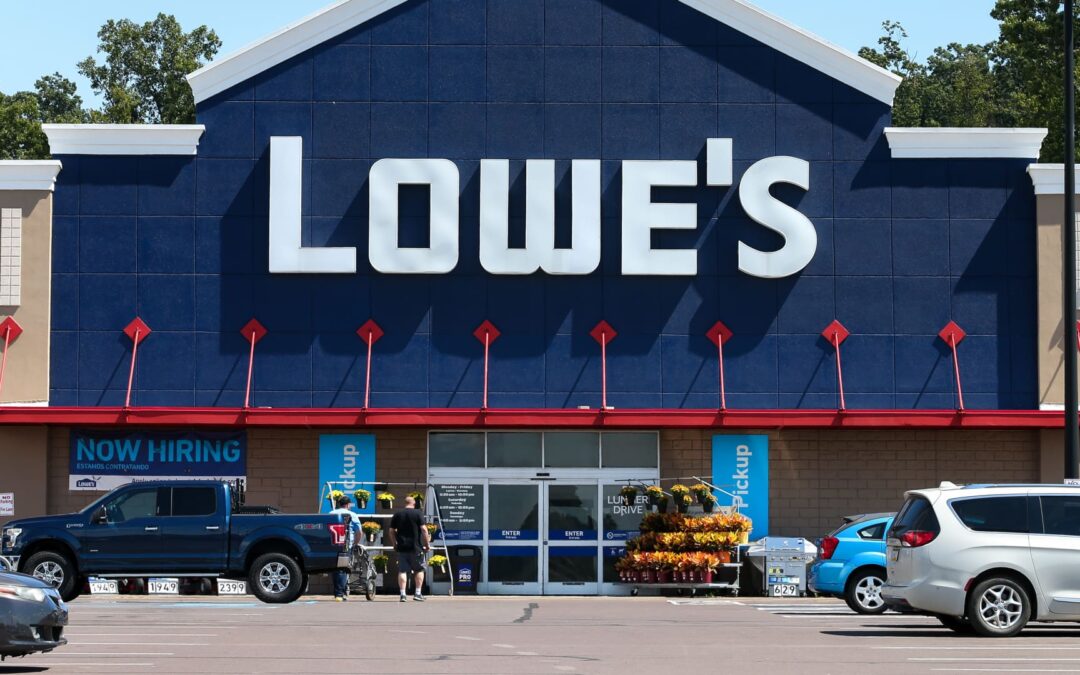The Lowe’s logo is displayed on the front of the store near Bloomsburg.
Paul Weaver | Lightrocket | Getty Images
Lowe’s reported mixed fiscal second-quarter results on Tuesday, as consumers tackled springtime projects and helped offset weakening home improvement demand.
The company topped Wall Street’s earnings estimates, but fell slightly short of expected sales.
The home improvement retailer stuck by its full-year forecast. It anticipates total sales will range between $87 billion and $89 billion for the period. It projects comparable sales will drop by 2% to 4% this fiscal year. It expects adjusted earnings per share will range between $13.20 and $13.60.
Here’s how the company did for the three-month period that ended Aug. 4 compared with what analysts expected, according to consensus estimates from Refinitiv:
- Earnings per share: $4.56 vs. $4.49 expected
- Revenue: $24.96 billion vs. $24.99 billion expected
The company’s shares rose more than 3% in premarket trading Tuesday.
Lowe’s net income for the three-month period was $2.67 billion, or $4.56 per share, compared with $2.99 billion, or $4.68 per share in the year-ago period.
Net sales fell from $27.48 billion a year earlier.
Comparable sales decreased 1.6% in the fiscal second quarter. That’s better than the 2.6% decline that analysts expected, according to FactSet.
For the second quarter, the company said spring projects, online growth and momentum with home professionals lifted sales as lumber prices fell and demand for discretionary do-it-yourself projects fell.
Lowe’s is more reliant on do-it-yourself shoppers for its sales than Home Depot is, but has tried to change that. Only about a quarter of Lowe’s sales come from home professionals, while Home Depot typically gets about half of its sales from them. Those pros tend to be bigger and more steady spenders.
Lowe’s has already signaled to Wall Street that sales will slow this year as unusually high demand fueled by the Covid pandemic fades. It cut its full-year forecast in May.
Its rival Home Depot has also warned of waning demand. Last week, the company reaffirmed expectations for a tougher year ahead, even as it reported stronger than expected quarterly results. Home Depot CFO Richard McPhail said customers are tackling smaller projects and buying fewer big-ticket items, such as appliances.
Spending trends are moderating after the worst of the pandemic, and many Americans have less to fix or purchase after a spree of home improvement-related shopping during that time. Many consumers are also feeling squeezed by inflation or choosing to spend more on services.
Both Lowe’s and Home Depot face a confusing backdrop, as consumers deal with rising interest rates and elevated prices of everyday items — yet the companies also benefit from a strong jobs market and a shortage of housing in the U.S. Mortgage rates have hit their highest level in more than two decades, boxing out some new homeowners and discouraging current homeowners from moving. Despite higher mortgage rates, home prices rose for the fourth straight month in May, according to the S&P CoreLogic Case-Shiller home price index.
Shares of Lowe’s closed on Monday at $217.59, bringing the company’s market value to $127.5 billion. So far this year, Lowe’s stock is up more than 9%. That’s less than the approximately 14% gains of the S&P 500.
This is a developing story. Please check back for updates.








